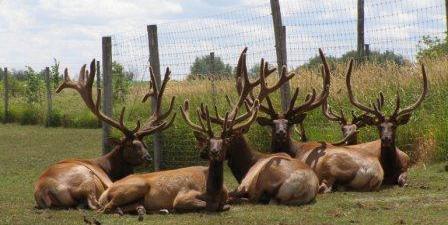Chronic Wasting Disease (CWD) is a disease that impacts whitetail, mule deer and elk. The disease has not yet been found in Texas, and officials would like to keep it that way. Elk producers wanting to sell or move elk in Texas must enroll in the Texas Animal Health Commission (TAHC) CWD herd monitoring program or have elk tested as described later in this article. During 2011, the TAHC’s rules for elk movement have been held in abeyance to encourage producers to enroll in the CWD elk monitoring program.
After January 1, 2012, however, elk will only be allowed to move after all surveillance requirements have been met. Surveillance requirements can be must met by one of two ways. First, breeders can qualify by enrolling in the CWD status program and testing all mortalities and achieving the necessary status. Or additionally, elk breeders can qualify by having a valid “not detected” CWD test on file prior to elk movement.

The number of valid CWD tests required are based on the number of elk being moved and whether they are captive or free ranging.
The TAHC implemented new elk herd requirements on January 1, 2010, to ensure a stronger surveillance system for CWD in elk. “The program is intended to help protect the exotic and native wildlife and the cervid industry of Texas from the possible introduction of CWD, by developing an effective surveillance system”, Dr. Dee Ellis, TAHC State Veterinarian, said.” “Enrollment and ultimately achieving status will allow producers to move elk without requiring additional mortality testing,” Dr. Ellis added. “I strongly encourage all elk producers to sign up today.”
CWD is a transmissible spongiform encephalopathy known to affect elk, moose, white-tailed deer, black-tailed deer and mule deer. It has had an impact on whitetail, mule deer and elk hunting in other states. It is a fatal, degenerative brain wasting disease. The typical clinical signs of CWD are emaciation, behavioral changes and excessive salivation.
CWD has not been detected in captive or free-ranging deer or elk in Texas, but the occurrence of CWD in Colorado and other states is more common. Elk producers must continue to be mindful of the disease and take necessary precautions to ensure the safety of exotic livestock. In order to be eligible for moving elk, participation in the program is mandatory. Elk owners can enroll their herds in the CWD monitoring program by contacting their local TAHC office.